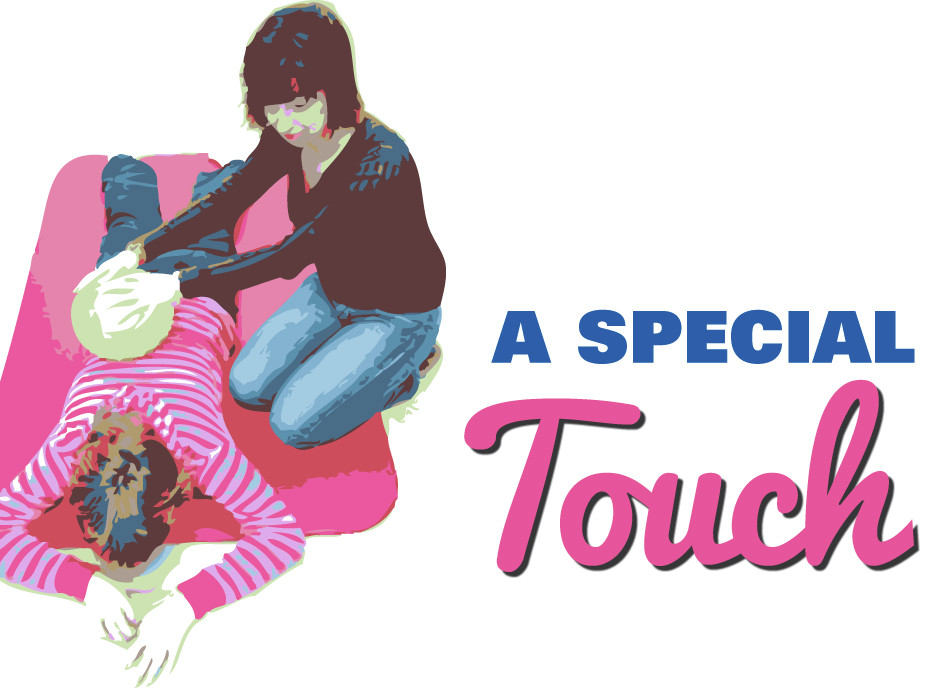How Massage Therapy Can Benefit Children With Special Needs

For many families, the interest and demand for complementary and alternative medicine (CAM) continues to grow. For parents of children with special needs, the use of alternative treatments is even more common. One recent study found that 33 percent of parents reported using CAM for their child within the past year, with therapeutic massage (TM) being one of the most popular therapies. In fact, therapeutic massage is one of the most widely-used CAM therapies in the United States, according to National Health Interview Survey data.
For children diagnosed with an Autism Spectrum Disorder (ASD), several types of therapies are used, each of which addresses specific ASD-associated symptoms. Because ASD is so complex, each child will present with different needs but the end goal is always the same—to increase the quality of life and the functional independence of the child.
How Massage Helps
Therapeutic massage can be integrated into a child’s overall plan of care. When TM is added as an adjunct therapy to a child’s Occupational Therapy (OT), Speech Therapy (ST) or Physical Therapy (PT) plan, parents can see significant results and improvement in cognitive skills. Some of the main characteristics of ASD are impairments in social interaction and impaired communication. TM has shown to promote more on-task and social relatedness behavior during play observations. Over time, TM sessions from a skilled therapist and/or at home from the parents can provide relaxation, help with body awareness, help the child to become more accustomed to tactile stimulation and has also helped decrease issues with sleeping. In addition, massage has helped increase muscle tone in children with ASD, which in turn has helped increase fine and gross motor skills.
What to Expect from a Massage Session
The massage session is custom-designed with the individual child in mind and is based on their response to tactile stimulation. The massage can take place during the child’s OT, ST or PT sessions or the parent can opt for a private session where the massage will be given in a warm, dimly lit, quiet room with soft music. The child may be lying down, sitting or held during a session. More often than not, a therapist will provide pediatric massage through clothing; otherwise, a parent must be present at all times.
Many times the first session will focus on getting acclimated with the child. Before the therapist begins massage, he or she will always ask for permission from the child. Because transitioning from one activity to the next may be difficult for the child, it’s important to communicate throughout the entire session and assure them that there will be no surprises.
Depending on the child’s tactile needs, a variety of different textures should be available for the child to explore, like bath mitts, a towel, cuddly toys, paint rolls/brushes, scrub brushes, hand/finger puppets, silk or velvet fabrics, etc. Skin-to-skin contact is best, but the child may need to satisfy a sensory need using these items. Light touch is avoided as this can be unpleasant. Firm strokes and compressions are typically preferred for a child diagnosed with ASD.
Can Parents Provide Massage to Children with Autism?
Yes! Yes! Yes! Parents report feeling discouraged because their child with autism does not respond to their affection and love—but that continued massage has brought them closer to their children and that massage has opened a communication channel between them. Parents can try rolling or rubbing all kinds of materials (such as the list mentioned above) over their child’s body. Always do this in such a way that your child enjoys it. Remember: The touch of our hands stimulates their senses and helps them develop mentally. Massage should be an essential part in a child’s life from birth throughout adulthood.
Where To Learn More
This month, parents can attend 2-hour workshops called “Massage Techniques for Parents of Children with Autism” held at multiple Central Arkansas Library System locations. Master Massage Therapist Alicia Romine discusses the benefits of therapeutic massage and sensory-based touch for children with autism and teaches basic techniques for parents. Three workshops will be offered: April 4 at Thompson Library, April 11 at Terry Library and April 18 at Dee Brown Library. For more info, visit CALS.org.
NOTE: Therapeutic Massage is not intended to replace medical advice or care. To ensure the safety of the child, a healthcare professional should be consulted prior to any massage treatment.
Alicia Romine is a Master Massage Therapist in the state of Arkansas. She is currently employed with Allied Therapy & Consulting Services where she works with children with autism, cerebral palsy, and Down syndrome, to name a few.
